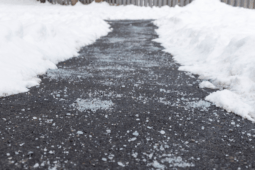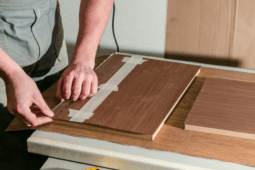How To Clean and Condition Leather Boots For Winter
This time of year, footwear choices can be a gamble. Overthink it, and you’re stuck in snow or hiking boots all day. Under-prepare and your socks and feet stay wet, cold, and covered in road salt.

The answer, of course, is to opt for the middle and choose a natural weather-resistant material that’s stylish no matter what the season: leather. Investing in a quality pair of leather boots or shoes is, I argue, a right of passage for any man. Properly cared for, they can last for decades, and likely a lifetime. Many of the classic boot styles by Red Wing, Wolverine, L.L. Bean, and Frye haven’t been changed for more than 100 years: they were designed to be rugged, stand up to all kinds of work and stress, and protect your feet, and they still do.
Of course, if you’re going to wear leather boots in inclement weather, it’s important to dress and seal them to stand up to the elements. Fortunately, there’s an easy four-step process you can perform in an afternoon to make them last.

Step One: Clean your boots with a soft, barely damp rag. Remove any dust, dirt, or debris. Slightly dampening the leather helps prepare it to accept the conditioning. Remove the shoelaces.

Step Two: You’ll need to choose a leather dressing that matches your boots. You can find this at the grocery or discount store, but I suggest going to a cobbler or old-school independent shoe shop to find the most options. If you’re working on hiking boots, consider going to the camping/outdoor/backpacking store to find the best solution (Hint: It’s Nikwax).
The best dressings feature mink oil, plus some sort of carrier/wax. Many have acrylic carriers, which are fine, but I prefer the all-natural Montana Pitch-Blend or the Pecard Original Leather Dressing, which mixes the mink oil with beeswax and pine pitch. It’s also a colorless product, so it doesn’t affect the tone of the leather. There’s nothing lab-made in my boots, so I like my dressing to match. Saddle soap is another great option (designed for leather horse saddles).

Begin by applying the dressing to all seams and stitches in your “uppers” – the not sole part of your boot. This helps keep the water out. Use your fingers to apply a thin coat. The natural dressing is actually pretty good for your skin as well…important this time of year.
Then, continue to rub the dressing all over the boots, so you’ve created a single, even coat.
Step Three: Then, take special care to focus on the seam where the upper meets the sole. This is where most water and cold air can enter the shoe. It can be difficult to get in the crevices with your hands, so use a small, soft brush to dab it.
Step Four: Allow the dressing to penetrate the boots for 30-60 minutes. After that time, the leather will have absorbed what it can take, and if you’ve applied an even coat, you won’t have any splotchiness. Use a very lightly dampened cloth to remove any extra dressing, it will be very visible on the surface. Replace the laces.
And…that’s it. Repeat as necessary, which on a new pair of shoes or boots is likely once a week.
For other general care, try only wearing your boots every other day, or allowing them to dry for at least twelve hours in between. This will help them begin to take the shape of your feet and allow the leather to come to a natural moisture level.
Clean frequently with a clean brush or rag (every time you take them off), and buff often. For more leather maintenance tips, check out our article on how to remove ink from leather.
For some suggestions of stylish boot options, check out our fall boot roundup, which includes a pair for every budget:
How do you care for and dress your leather shoes and boots? Post your thoughts in the comments below.









